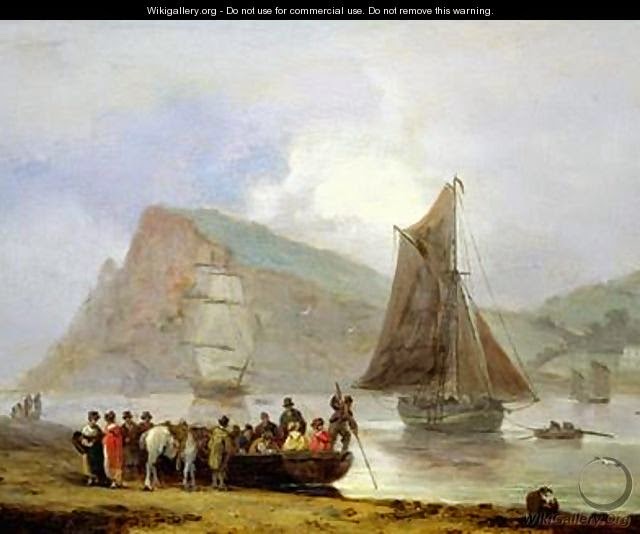Thomas Luny (1759–1837)
Two sorts of courage move me. The first is the sort of bravery that is called upon for a finite period, for minutes, hours, days or even on occasion months, and which demands a disregard for personal safety and a willingness to risk life and limb of the sake of others. The second is “fortitude”, the determination to endure suffering, privation or personal misfortune over an indefinite period, and still not be defeated. The latter is expressed, unforgettably, by the crippled poet William Ernest Henley (1849–1903):
In the fell
clutch of circumstance
I have not winced
nor cried aloud,
Under the
bludgeonings of chance
My head is
bloody, but unbowed.
These words come to mind – for reasons that will emerge
later in this article – when looking at the career of the marine artist, Thomas
Luny (1759–1837). His work is familiar to many of us, even if we don’t know his
name, if we have seen illustration of the Age of Fighting Sail. At a time
before photography Luny was one of the artists who had defined our perception
of how that age looked and felt.
 |
| The Bombardment of Algiers, August 1816, by Thomas Luny |
 |
| Self-portrait in youth |
Luny was born in Cornwall – most appropriately in the famed “Year
of Victories” when British forces were triumphant on land and sea In Europe and
North America. He came to London at the age of eleven and was apprenticed to
the marine painter Francis Holman (1729–1784), who was himself son of a master
mariner. This apprenticeship proved significant in determining the course of
Luny’s career since Holman’s younger brother, Captain John Holman (1733–1816), maintained
the family shipping business. The relationship between the brothers appears to
have been a close one. Francis would
therefore have been in close contact with the maritime world and this showed in
the wealth of detail and accuracy in his later work. Talented as Holman was
however, it is partly because of his mentorship of the more illustrious Luny
that he is now most remembered.
 |
| "A small shipyard on the Thames" by Francis Holman, Luny's mentor (National Maritime Museum, Greenwich, London, PD-ART-LIFE-70 |
By 1780 Thomas Luny had shown sufficient talent that he was
exhibiting marine paintings in the Royal Academy, and indeed he continued to do
so up to 1802. From 1783 Luny lived in London’s
Leadenhall Street, and here became acquainted with a dealer and framer of
paintings called Merle who subsequently promoted Luny's work very successfully.
 |
| The 18-year old Luny hits his stride: "Shipping off Dover" - 1777 |
 |
| A ship signalling for a pilot off Dover: By Thomas Luny 1793 |
 |
| George Tobin: "Napoleon Bonaparte in Torbay, at anchor, HMS Bellerophon, July 14, 1815" National Naval Museum Greenwich, London PAF7978 |
 |
| George Tobin: Aboriginal hut on Bruny Island, Tasmania, 1792 (Mitchell Library) |
 |
| Engraving of Luny's "The Glorious First of June" |
 |
| Thomas Luny: "Boarding the ferry at Teignmouth" - painted 1821 (With acknowledgements to Wikigallery) |
 |
| Thomas Luny: "A frigate of the Royal Navy leaving Cork Harbour 1830" |
 |
| The Battle of the Nile, August 1st 1798, at 10 p.m. Painted by Luny in 1835, over three decades since he had been afflicted |
For the first two parts of this occasional series on Naval
Artists of the 18th Century see the following earlier blogs, accessible from the
Blog Archive in the sidebar:
Part 1: 19th December 2014
Part 2: 9th January 2015
I agree with your views on courage. And Luny's kind is what we see most of in everyday life. Excellent article.
ReplyDeleteSuch courage is what makes us hopeful about the future, no matter what problems we must address in the immediate and intermediate term!
DeleteThis comment has been removed by a blog administrator.
ReplyDelete